- Project of Alex Mademo, Sylvain Totaro and Frederick Ajjoub Iaac - MaCT 2017 Faculty: Luis Falcone -
Tourism in Barcelona has been growing exponentially for the years since the 92′ Olympics and the city is now facing the effects generated by mass tourism. A big debate has been created around this issue between citizen, city officials, touristic apartment owners and hosts, after a series of complaints and protests have been made by many residents.
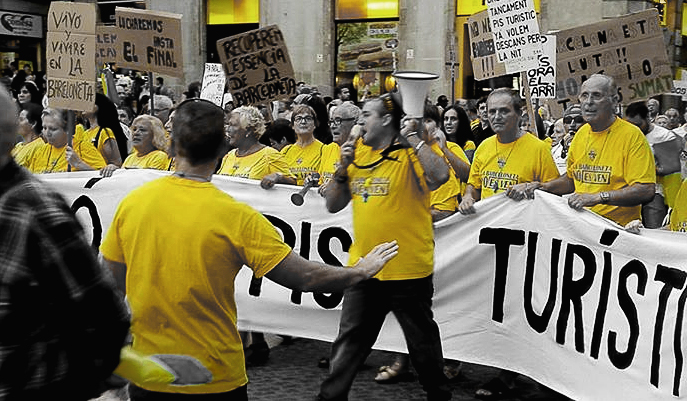
After conducting our own research, we identified that the main complaints of the residents against massive tourism where: noise disturbance, social friction, public/private property damage and the assumption that massive tourism eventually causes an increase in the cost of life of the locals because of gentrification.
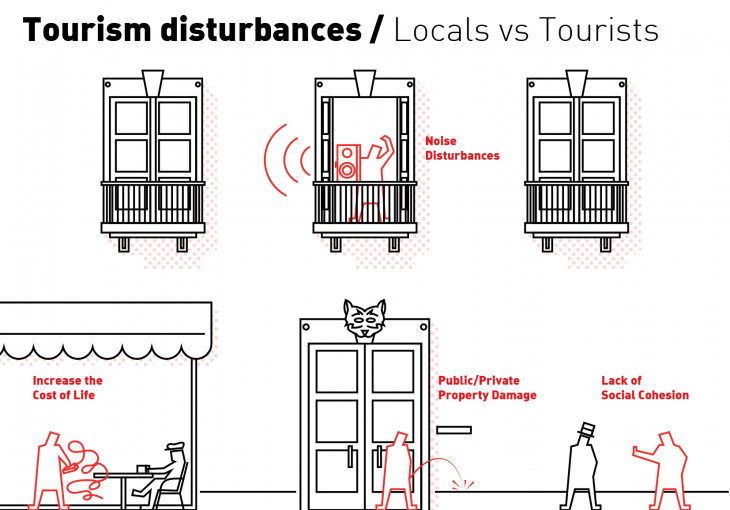
However, after understanding that tourism is a zoning issue we decided to go deeper by doing our own analysis of the location of the tourists. By using the databases provided to us by InAtlas, we were able to map the density of the touristic offer of Barcelona in comparison to the hard infrastructure of the city. It became evident that there is a lot more touristic activity in the center of the city, a fact that showed us the way that tourists are radially distributed in Barcelona.

-The proposal-
The city council of Barcelona has already proposed a solution for this debate through the PEUAT, a proposal which focuses on the housing rights of the locals and aims to reinvigorate them by regulating touristic accommodation throughout the city. However, we believe that the proposal of PEUAT was instead of solving the problem, freezing the problem, by creating a zoning regulation that either pauses or limits touristic accommodation activities.
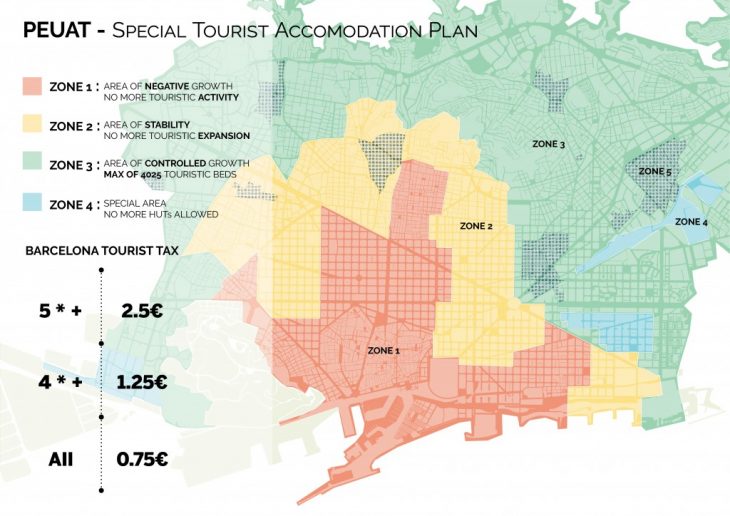
By literally inverting the PEUAT proposal we were able to create a new proposal that aims to increase the value of tourism inside the ecosystem of Barcelona and redistribute it around the city to create a positive impact.
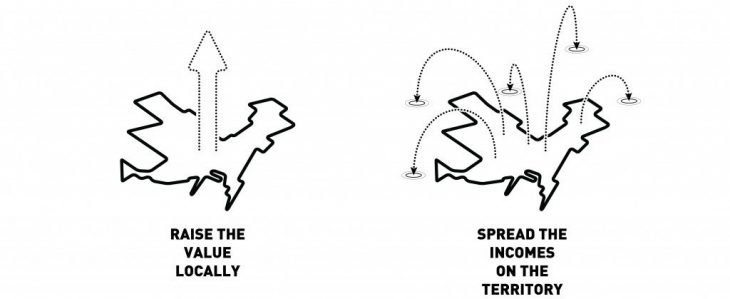
We kept the geographical characteristics of PEUAT’s zones but inverted their regulatory characteristics, something which resulted in the Flow of Ecosystem Values proposal:
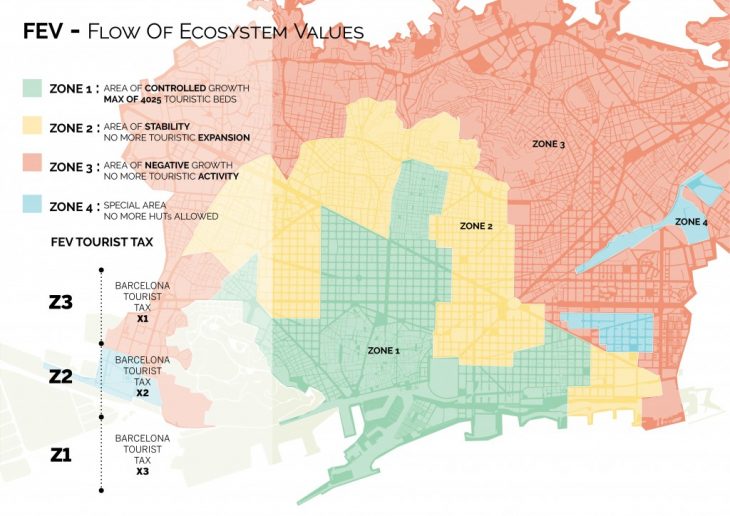
The FEV plan allows the controlled increase of touristic activity by introducing a new tourist tax. The tax is highest in the areas that have today the most touristic activity, in order to generate the most value for the city. We were able to calculate that the application of such a tourist tax on the HUTB and the already existing hotels would result in a 17.133.120€ increase of yearly tax revenues for Barcelona.
The FEV plan also proposes that this generated value will be redistributed towards the creation of more social houses. This increased value is equivalent to 231 social houses and a 52% increase in the capability of the city to build social houses. Since the creation of social houses is also an issue that the city council has also been focusing on, we believe that it would be sensible to approach the phenomenon of mass tourism as an opportunity instead of a crisis, and therefore use it to generate a necessary value for the city.
Flow of Ecosystem Values is a project of IaaC, Institute for Advanced Architecture of Catalonia at Master in City and Technology in 2016/2017 by:
Students: Alex Mademo, Sylvain Totaro, Frederick Ajjoub,
Faculty: Luis Falcon